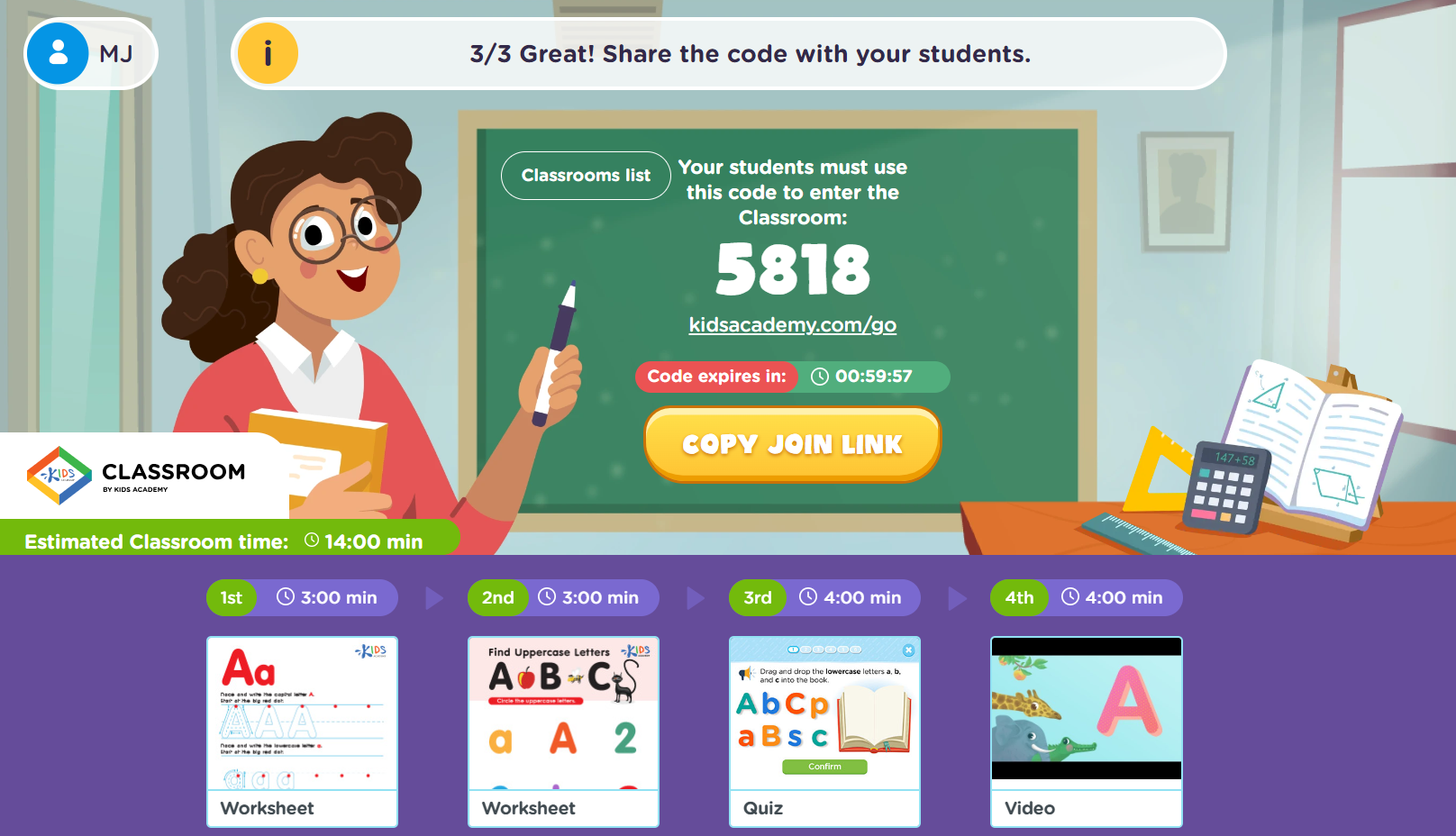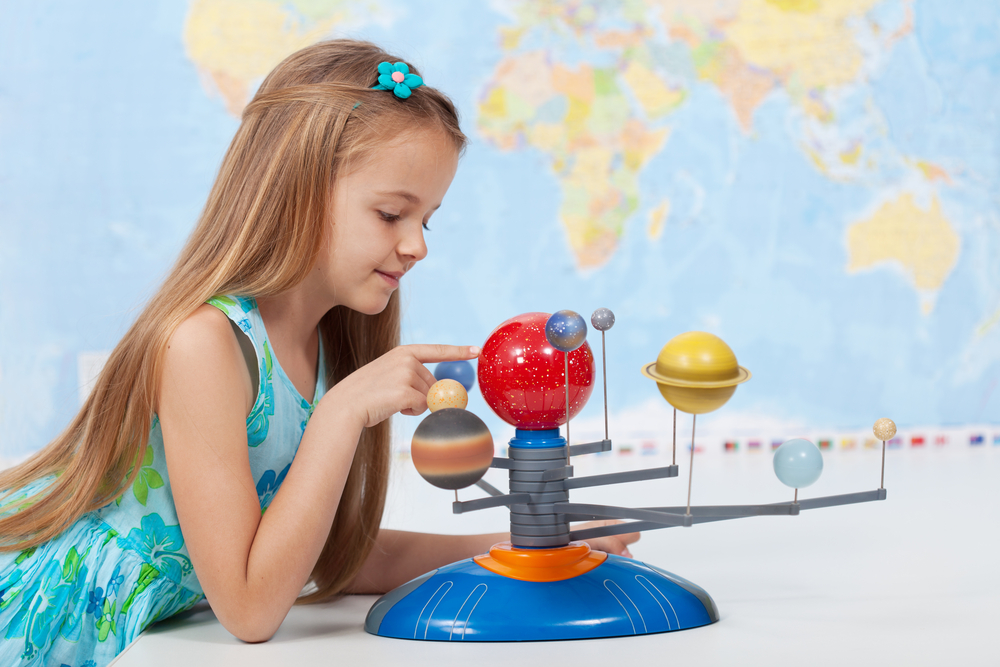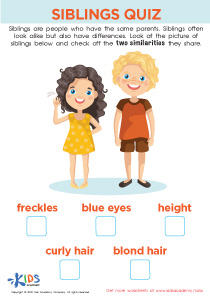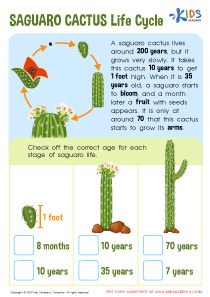Understanding moon phases Normal Space Worksheets for Ages 4-8
3 filtered results
-
From - To
Introduce young learners to the fascinating world of celestial wonders with our "Understanding Moon Phases" printable worksheets! Crafted for kids ages 4-8, these interactive sheets make learning about the moon’s phases fun and engaging. Our well-structured activities guide children through the lunar cycle, enhancing their observational and critical thinking skills. Perfect for educators and parents alike, these worksheets support foundational science knowledge with beautifully illustrated exercises and simple explanations. Embark on an exciting educational journey and inspire a lifelong love for space exploration! Download now and watch curious minds thrive.
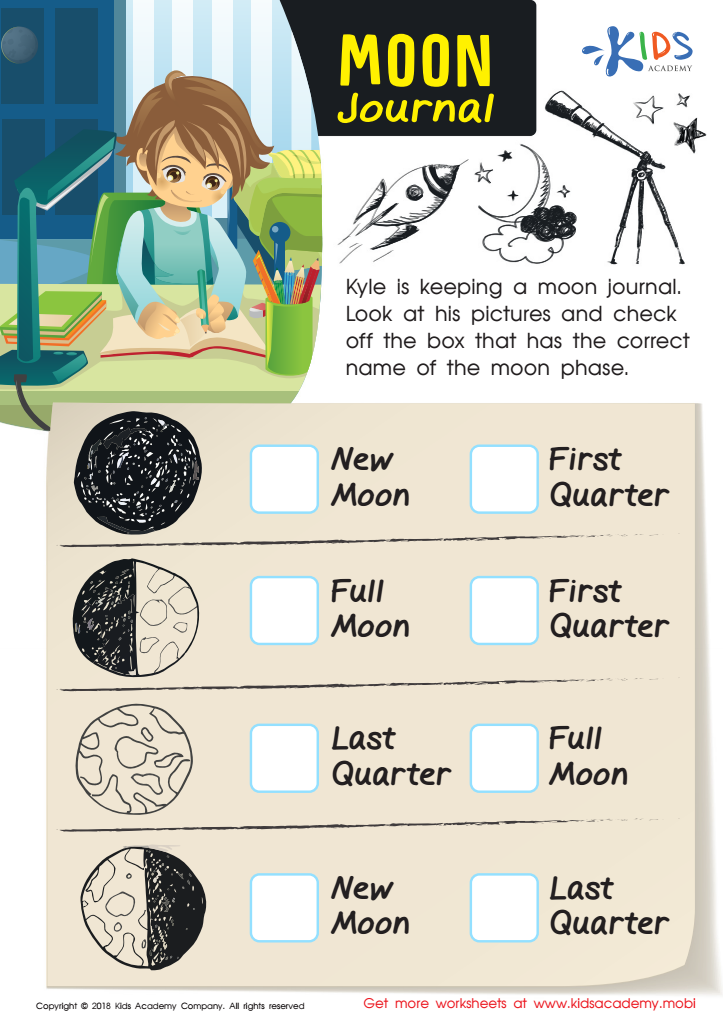

Moon Journal Worksheet
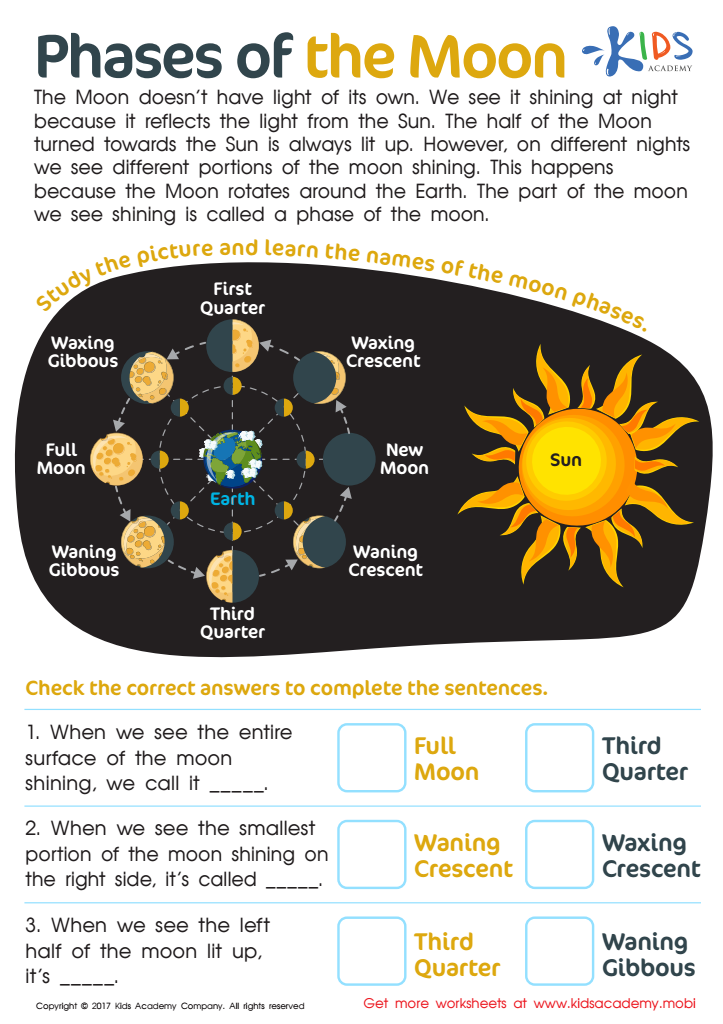

Phases of The Moon Worksheet
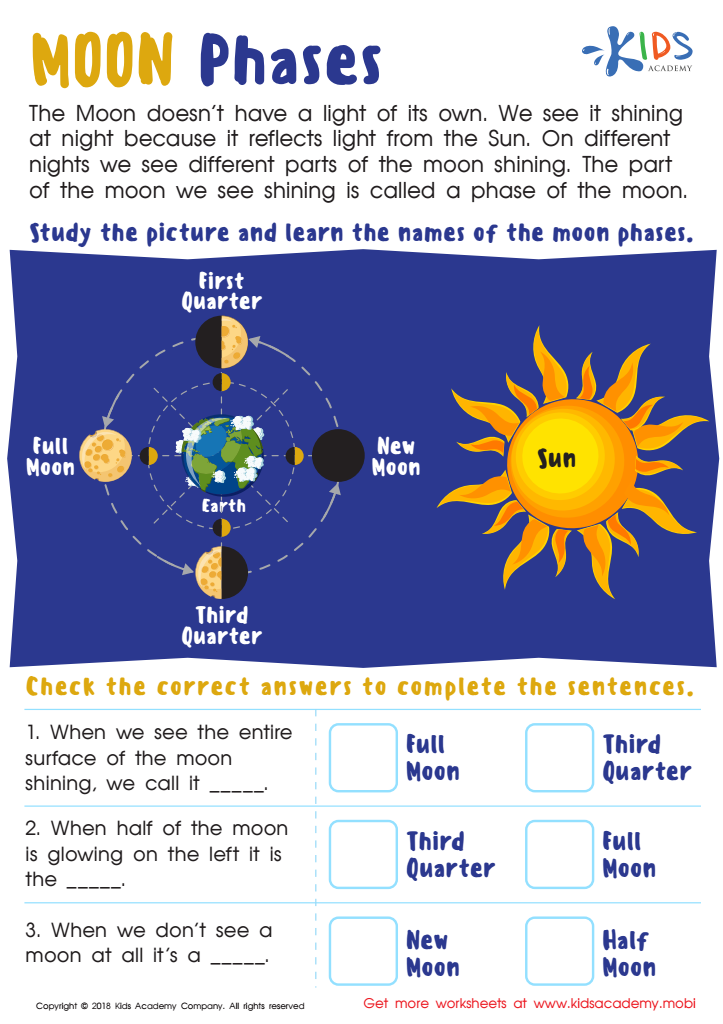

Moon Phases Worksheet
Understanding moon phases can be instructional and rewarding for young children, ages 4-8, both for parents and teachers. First, it helps cultivate curiosity about natural phenomena, enriching their science education early on. Young minds are naturally inquisitive, and observing the changing moon can spark a keen interest in astronomy and space exploration. Learning about moon phases also aids in developing essential skills such as observation, pattern recognition, and basic scientific reasoning.
Parents and teachers can use moon phases as a practical example to explain more extensive concepts like orbit, gravity, and light reflection, laying a solid foundation for later, more complex scientific studies. It fosters a sense of wonder and encourages outdoor activities like sky-gazing, which can be both educational and recreational. Observing the moon regularly can help improve children's patience and long-term observational skills, crucial life skills extending beyond academic learning.
Furthermore, understanding natural cycles fosters a child's connection with their environment and planet. This can instill a sense of responsibility and admiration for our universe. Finally, such shared learning experiences can strengthen family bonds and teacher-student relationships, creating shared moments of exploration and discovery. In summary, learning about moon phases amalgamates scientific education with essential skills development and personal enrichment.
 Assign to My Students
Assign to My Students







